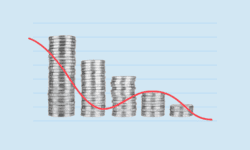How can growth in passive and sustainability investment strategies affect a company’s relationship efforts and effectiveness with investors and buy-side and sell-side analysts? Should we also think about this in context with the concurrent trend of shifting sell-side research business models both in the U.S. and Europe? Might ESG/Sustainability be a saving grace?
These, and other related questions warrant strategic consideration by company IROs, C-suite leadership and Boards of Directors.
After taking a look at AlphaSense and other current research, my takeaway is that proactive attention to a growing, mainstream sustainability investor base can effectively provide a positive bridge and lifeline in the inevitable transformation of both the investor relations and investment research fields.
Investment strategies
Nearly 40% of U.S. equity assets under management (AUM) are now held in passive (rules-based) vehicles. Juxtapose this with over 20% of U.S. equity AUM ($8.72 trillion) that is now using sustainability strategies in investment decisions. One can see the growing chance of cross-over between these investment strategies that has piqued my attention – and others’ too.
Passive investing includes quantitatively driven, automated and/or high frequency electronic trading, index funds and exchange trade funds (ETFs).
- High frequency trading now accounts for roughly 55% of trading volume in U.S. equity markets and about 40% in European equity markets.
- Mutual funds can be either actively managed or can be index funds (which falls into the passive investing category). Total net assets invested in ESG-focused U.S. mutual funds stood at $135 billion as of 2016 or 45% higher than $93 billion as of 2010.
- In the last three years, investors added $1.3 trillion to ETFs and other passive funds, while active funds lost $250 billion.
Sustainability investment strategies are bifurcated by general reference as either exclusionary/values-based or inclusionary/performance-based. The latter is further defined by social motivation or positive ESG performance, index tracker or theme specific.
In a May 2017 paper published by Nasdaq ($NDAQ) on passive investing, the author made several key points in talking about this paradigm shift and convergence:[5]
- “The institutional investment landscape has changed dramatically over the last twelve months… primarily the result of the unprecedented explosion of capital inflows received by passive investors.”
- “The level of passive ownership is significantly related to the updated goals of the “new” activist campaigns… successful in obtaining outcomes related to corporate governance or control… [these topics] receive considerable attention in the proxy voting guidelines of passive institutions.”
The author also correlates the battle for control and the driving force of socially responsible investing (SRI) / ESG:
- “The rise of SRI across North America has simultaneously overlapped with the emergence of index ownership and the redefined wave of activism.”
- “SRI investing is not “fad” investing either… corporate management teams now accept SRI as a permanent investment style and are altering their respective marketing strategies accordingly… and [have] a more comprehensive understanding of the applicability of these values towards asset allocations. While there is an obvious “green” aspect to the style, the facet of SRI that warrants greater importance is sustainability.”
More recently, Morningstar’s ($MORN) head of sustainability research publicly shared:
- “There are 187 open-end mutual funds and ETFs in the United States that practice sustainable investing, of which 141 are open-end funds and 46 are ETFs, as of mid-2017.”
- “Many of them are relatively young, with 76 not having reached their three-year anniversaries. Thirty-five funds were launched in 2016 and another dozen in the first half of 2017. Overall, these funds cover 36 different Morningstar categories.”
- He also noted that, “Although not a torrent by any means, investors continue to put money into sustainable funds. So far, this year, the group has experienced an estimated $2.9 billion in net flows, which is on pace to top the group’s $4.8 billion in net flows for all of 2016.”
Sell-Side analysts
Meanwhile, the traditional sell-side research business model has undergone and continues to undergo significant change driven by, not the least of which, the Wall Street firms’ settlement with the New York Attorney General that affected the role of the sell-side analyst within investment banks in the U.S. and now the new European Securities and Markets Authority MiFID II regulation.
Once the 2018 implementation deadline goes into effect, MiFID II is expected to not only impact financial institutions and sell-side research pricing, justification and services in Europe, but also to impact research firms in the U.S. who they compete against.[9]
As Mike Tyrrell, editor of the specialist SRI investment research and communications network, SRI-CONNECT, points out:
Technology has changed fundamentally the nature of communications and the availability of data. Regulation (MIFID II) will change fundamentally the business dynamics of investment research. To survive and thrive as areas of investment focus, sustainability and corporate governance research will need to deliver insight to investors and not simply swamp them with data. To enable integration into ‘mainstream’ decision-making, our industry will need to supply depth and diversity of view.
To get an informal sense of analysts’ attention to sustainability, I checked the SRI-CONNECT 5,000+ membership listing. Of these, >1,200+ identify as ‘buy-side’ while fewer than 120 identify as sell-side analysts (the rest are IROs, institutional investors, independent research providers etc). From this, it looks like there is a disparity between buy-side and sell-side analysts’ attention to sustainability; something that sell-side analysts might do well to heed in the face of the growth of passive investment.
Taking my curiosity one step further, I used AlphaSense to find which sell-side analysts are writing about sustainability, if any. I ran a search in AlphaSense for keywords sustainability and ESG, and limited the timeframe to the last 12 months. I found ESG / sustainability references by 19 research firms, in 475 documents, on 163 companies, across 11 sectors and 49 industries.
The research notes were dominated by European firms; the clear leader being Credit Suisse ($CS), followed by Natixis ($NTXFF), Kepler Cheuvreux (privately held), Deutsche Bank ($DB), Société Générale ($GLE.PA), HSBC ($HSBC) and others. JP Morgan ($JPM) was the only top-tier U.S. research firm with a notable number of results. I also found a Deutsche Bank ESG conference primer with comments that further support the focus of my blog:
- “ESG is one of the fastest growing investing strategies in the U.S. There is more money invested with an eye toward sustainability than there is in the ETF and hedge fund industry combined.”
- “Over 430 social and environmental shareholder resolutions were filed in the 2015 and 2016 proxy seasons, with environmental and sustainable governance resolutions combined representing 40% of the total.”
Why isn’t there more U.S. sell-side analyst commentary on sustainability performance? How soon will they adjust their research value proposition by adapting to the dynamic shift toward ESG / sustainability investing? What is tying the sell-side analysts’ hands? Could there be mutual benefit gained from IR and C-suite leaders stepping-up suitable sustainability performance disclosure and discussions, so sell-side analysts can correlate the applicable information to constructive research and analysis on more companies?
Investor Relations
Investors are increasingly interested in expanded communications to include sustainability goals and performance discussions, a.k.a. extra financial, non-financial, intangibles or other.[14]
A recent survey of IROs found only 14% indicated they regularly communicate with passive investors; 21% have made shifts in their IR strategy as a result of the increase in passive investing, 79% have not. The survey also identified that when passive investors contact IROs, their primary topic of inquiry is corporate governance policy (70%), followed by board structure (42%) and sustainability policy (28%).[15] There is a lot of ESG/Sustainability here…
In my own modest survey of about 100 attendees, during a panel presentation that I recently moderated at the National Investor Relations Institute (NIRI) 2017 annual conference in June, titled, “ESG: De-Mystifying Sustainability for IR Practitioners,”[16] I found that:
- 35% of the IR professionals indicated they were just now tuning-in to the subject of ESG / sustainability
- 24% indicated they have been trying to participate, but are either bandwidth-constrained or overwhelmed
- 29% indicated they are well on their way and looking to refine their approach to including sustainability in their IR strategy.
Two key roles of IR professionals have always been to:
- Prepare defensible messaging, supported with fluent fact-based performance conversation
- Conduct strategic relationship development with an eye toward expanding constructive investor interest in the company, while being ever-vigilant to possible unconstructive shareholder activism.
What aspects of the company’s sustainability story are unknown, unrecognized or misunderstood, that could contribute to value creation if told in compelling and meaningful IR messaging? Where might aspects of ESG be germane to expanded mainstream investor interest and communications? How might developing ongoing relationships with passive investors and sell-side analysts increase shareholder value, not only by increasing demand for the company’s publicly traded equity and debt, but also by decreasing the risk of rogue shareholder votes?
Final thought
I believe it is important to take a positive approach to sustainability and to be curious. Look for myriad opportunities it can present to your firm or company. If for no other reason, remember that regardless of how company equity shares are purchased, most all shares have the right to vote.
Developing and maintaining ongoing relationships with both passive and sustainability investors – not only with the investing side but also with the voting side of the investment institutions – is an ongoing imperative to strategically position and protect your firm or company.
Pamela Styles is principal of Next Level Investor Relations LLC, an Investor Relations consultancy with dual IR and ESG/Sustainability specialties.




